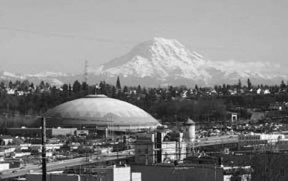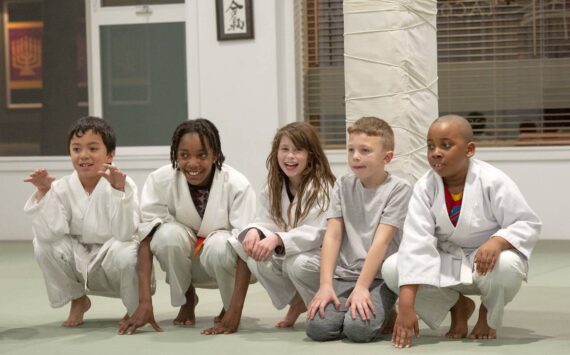On the heels of a failed bond measure asking Tacoma residents to pay for tens of millions of dollars in improvements to the Tacoma Dome, city staffers switched gears Tuesday and outlined a plan to borrow $2.6 million for short-term improvements designed to capture more revenue from sporting events and the booming intimate-setting concert industry.
We have to maximize revenues and become more flexible, said Mike Combs, director of public facilities, who outlined the new strategy yesterday during the city council study session. The intent of this strategy is to keep the Tacoma Dome self-sufficient. If we do nothing, we will continue to drain our reserves, become a less viable option for promoters, agents, and artists, and become a burden to the general fund.
The plan calls for borrowing money from the citys general fund to purchase new turf with a price tag of $750,000, and spending $1.9 million to fit the Domes ceiling with a structure that would create a smaller, theater-style setting for concerts — shrinking the Dome from a 23,000-seat facility to a facility seating some 5,000 to 8,000 people.
A smaller Dome could mean bigger profits for the 23-year-old facility, said Dome officials. According to Rob Henson, deputy director for the Dome, the top 100 U.S. concert tours drew an average of 7,940 people.
I get shut out of negotiations pretty early on because were simply too big, said Henson. Concert promoters are turning to newer, smaller venues such as the Everett Events Center, White River Amphitheater, and the Paramount Theater in Seattle, said Henson.
Henson and Combs told councilmembers that a smaller concert setting could draw 12 additional shows per year and bring in more than $500,000 in additional revenue.
Additionally, new artificial turf would allow the Dome to secure a contract to host the state high school football championship through 2010, according to Combs. New turf could also help draw college football and soccer to the Dome.
Combs told councilmembers the loan would allow us to rebuild reserves and start looking at short-term improvements as we can afford to do them. Short-term improvements include a new marquee, audio system, and seating.
Though most councilmembers generally supported the plan, questions were raised as to how Dome officials planned to pay back the $2.6 million loan over three years with expected additional revenues of $500,000 per year.
Combs commented that the Dome had a strong first quarter: through March, the Dome has earned $400,000 more than the first quarter of last year, and is banking on a strong fall season to help cover the shortfall.
Councilmember Julie Anderson asked how the Dome was able to trim costs from $45 million to $2.6 million yet still manage to offer improvements. How did you get the same net effect for millions less? asked Anderson.
Combs commented that the improvements are short-term, and dont require structural changes to the Dome, which is where the big dollars came in.
Combs also commented that the opportunity to sell naming rights to the smaller concert theater deserves a strong look in order to help defer the costs. Similar arrangements exist at other cities throughout the U.S.
Theres still a viable market to place a name on the facility, said Combs.
Though the Dome doesnt have a sports franchise, its located in a prime location near Interstate 5.
City Manager Eric Anderson reflected on the failed referenda that would have renewed bonds. In September, a $45 million bond measure received more than 60 percent support from voters, but did not receive enough overall voters in the election. In February, when the measure was presented to voters a second time, turnout was up, but the measure failed to receive 60 percent voter approval.
Ive taken that as a statement from citizens that public dollars are not appropriate and the Dome should be self-sufficient, said Anderson. This means the Dome needs to change its business plan.








